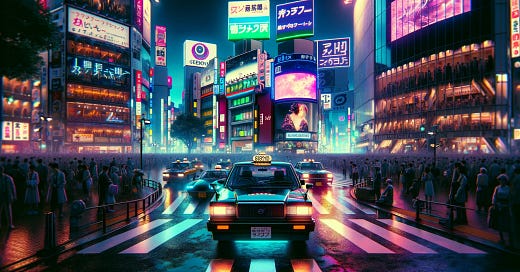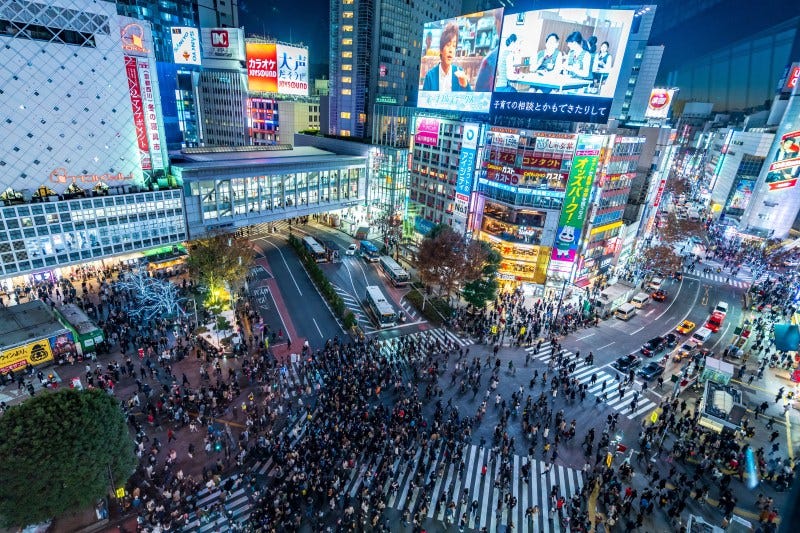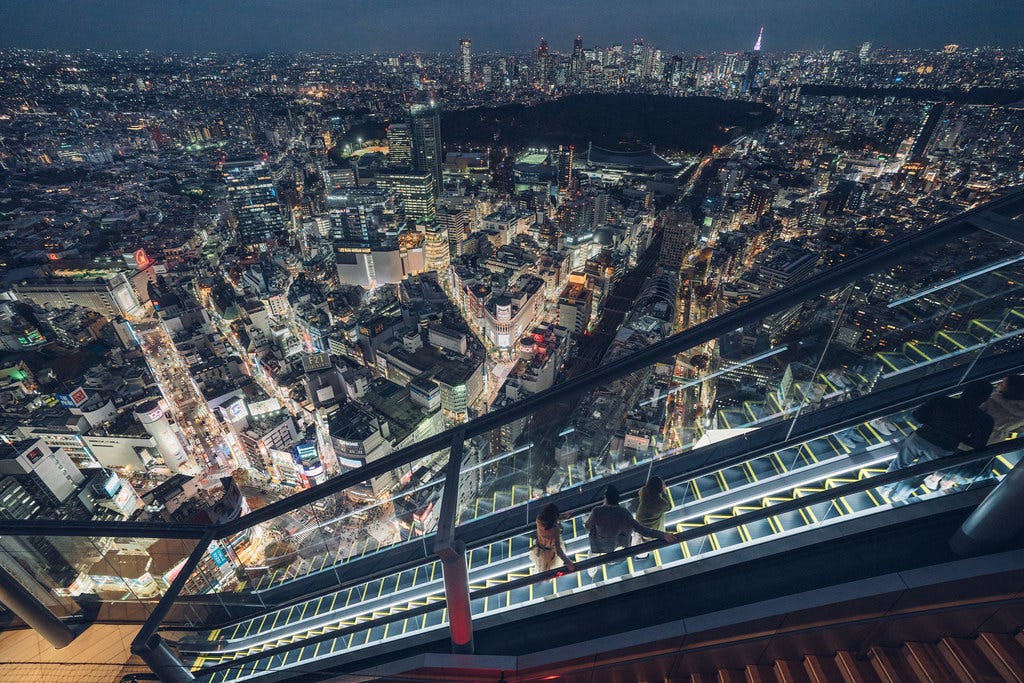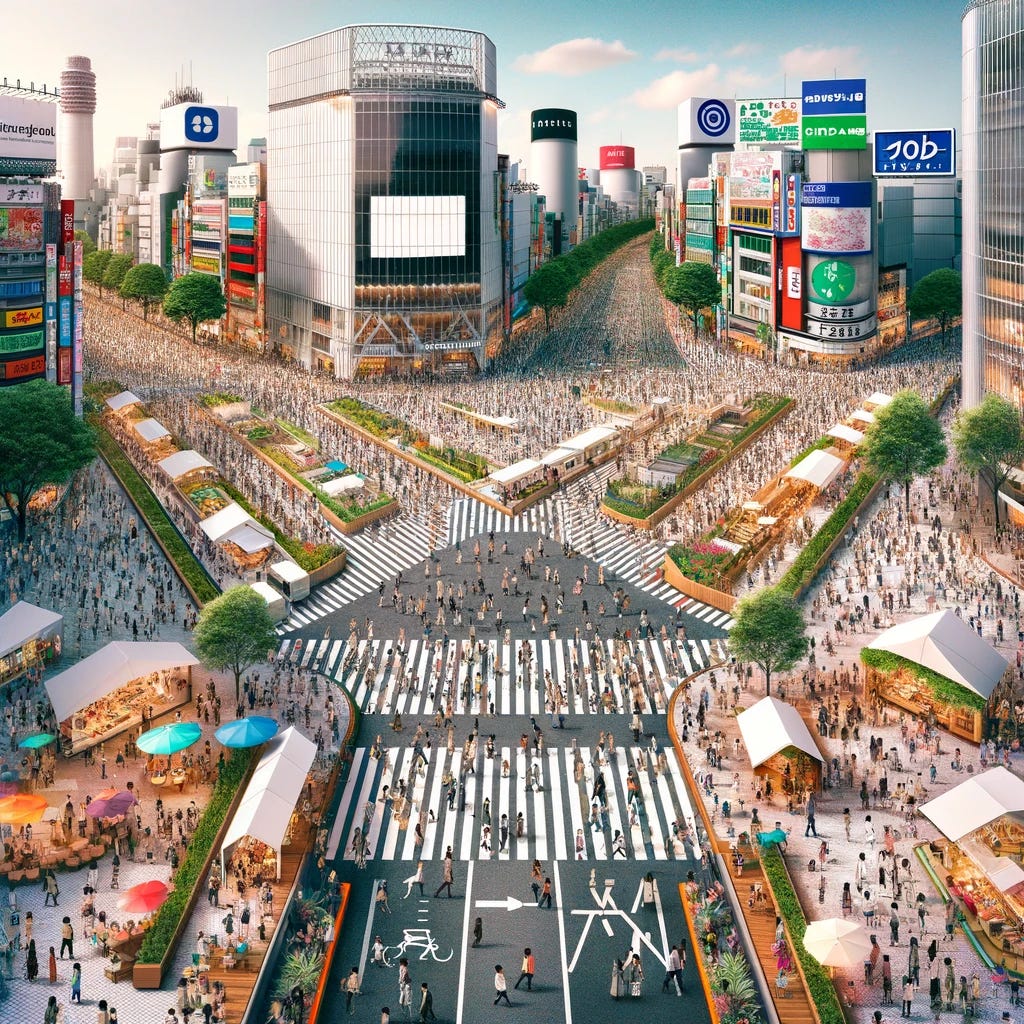Shibuya crossing is the busiest pedestrian crossing in the world.
It's not just a Tokyo landmark, but a global icon, synonymous with the image of modern Japan. Each day, a staggering 2.4 million people traverse this intersection, with about 2,500 people crossing at each light change.
This isn't just a crossing; it's the living, beating heart of Tokyo, and likely the first image that comes to mind when people think of the city, and perhaps even Japan.
A victim of car-centric planning
But this symbol of urban vibrancy is being choked by an outdated, car-centric approach to city planning. The local government, seemingly fixated on maintaining vehicular access, is ignoring the fact that Shibuya Crossing is buckling under its own popularity. The area around the crossing has seen the rise of some of the world's most iconic skyscrapers, like the Shibuya Scramble Square, which bring in an ever-increasing flow of pedestrians.
Yet, the local government continues to prioritize cars, creating a stark contrast between its progressive skyscraper projects and its archaic traffic management.
The crux of the issue is the disproportionate allocation of space and time to vehicles at the expense of pedestrians. In an intersection where foot traffic vastly outnumbers vehicular traffic, cars still dominate, getting more than their fair share of the crossing time. This prioritization is not just impractical; it's a blatant disregard for the needs of the walking majority.
In response to the growing pedestrian congestion, millions have been spent on constructing pedestrian bridges, tunnels, elevators, and stairs – expensive infrastructures that only treat the symptoms, not the cause. These are not real solutions; they are desperate attempts to maintain a status quo that benefits a tiny fraction of car owners.
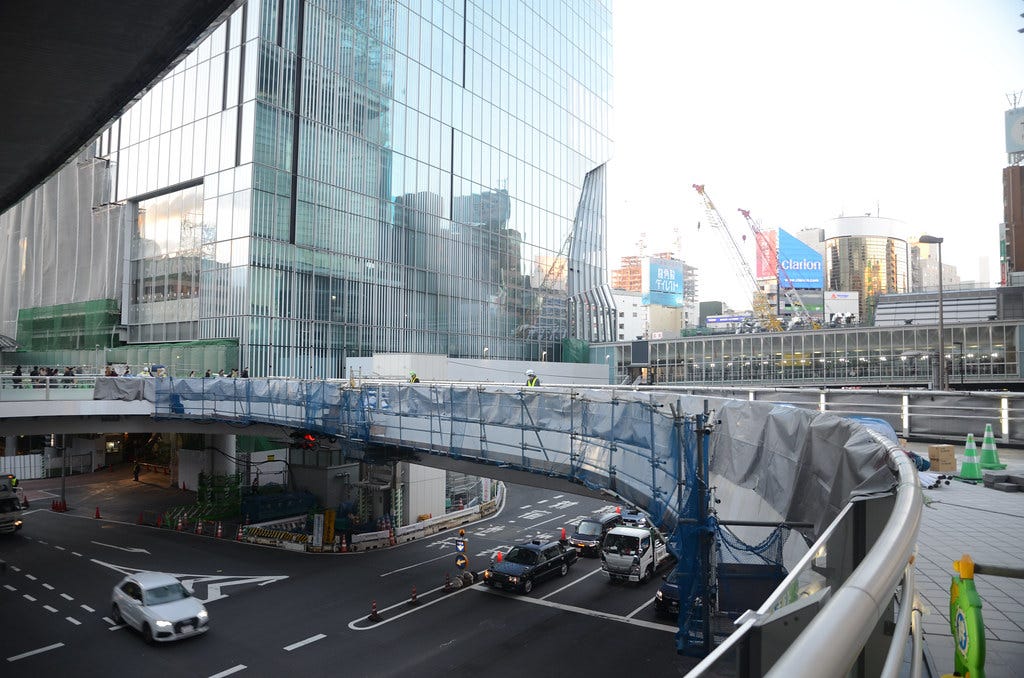
The obvious solution: Make Shibuya crossing a car-free zone
The solution to this urban design nightmare is glaringly obvious and far more cost-effective: pedestrianize Shibuya Crossing. By eliminating car traffic, the crossing could become a true pedestrian paradise, increasing safety, efficiency, and the overall experience for the millions who walk it daily. The nearby highways and arterial roads already provide ample routes for cars, making their presence in the crossing unnecessary and even detrimental.
Transforming Shibuya Crossing into a car-free zone isn't just about solving a local traffic problem; it's about taking a bold step towards urban innovation. Tokyo has the opportunity to set a global example in pedestrian-focused city planning. By prioritizing people over cars, Shibuya Crossing could shift from being a symbol of congestion and poor planning to a beacon of smart, sustainable urban living.
A Call to Rethink Urban Spaces
The future of urban spaces must prioritize the needs of the many over the convenience of the few. Shibuya Crossing, with its massive pedestrian volume, is the perfect candidate for such a transformation.
It's time for the Shibuya government to recognize that their responsibility extends beyond local intersections to setting a global precedent. The crossing deserves to be more than a congested corner of Tokyo; it should be a showcase of the city's commitment to innovative, people-centric urban design. Shibuya Crossing must evolve from a design nightmare into the dream it was always meant to be.

